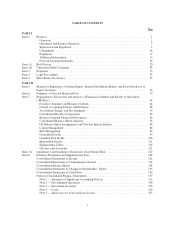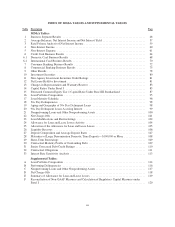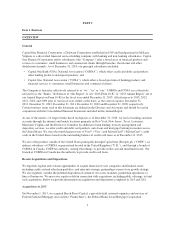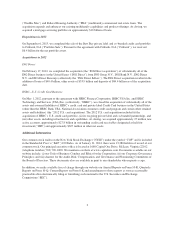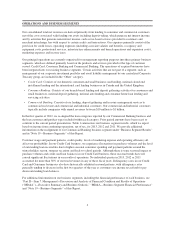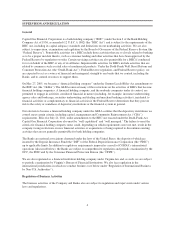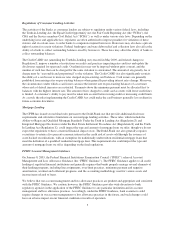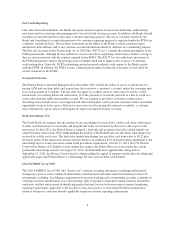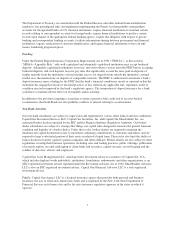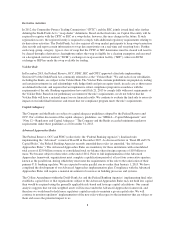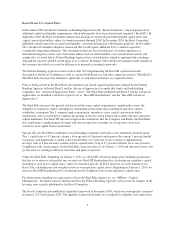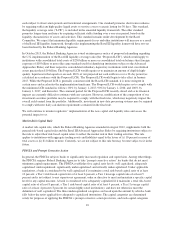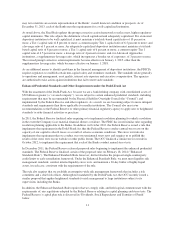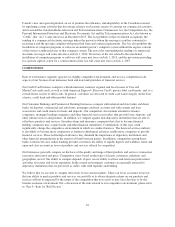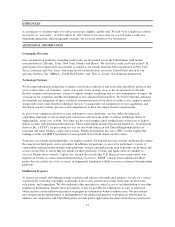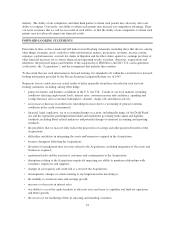Capital One 2013 Annual Report Download - page 28
Download and view the complete annual report
Please find page 28 of the 2013 Capital One annual report below. You can navigate through the pages in the report by either clicking on the pages listed below, or by using the keyword search tool below to find specific information within the annual report.Derivative Activities
In 2012, the Commodity Futures Trading Commission (“CFTC”) and the SEC jointly issued final rules further
defining the Dodd-Frank Act’s “swap dealer” definitions. Based on the final rules, no Capital One entity will be
required to register with the CFTC or SEC as a swap dealer; however, this may change in the future. If such
registration occurs, the registered entity is required to comply with additional regulatory requirements relating to
its derivatives activities. The Dodd-Frank Act also requires all swap market participants to keep swap transaction
data records and report certain information to swap data repositories on a real-time and on-going basis. Further,
each swap, group, category, type or class of swap that the CFTC or SEC determines must be cleared will need to
be cleared through a derivatives clearinghouse unless the swap is eligible for a clearing exemption and executed
on a designated contract market (“DCM”), exchange or swap execution facility (“SEF”), unless no DCM,
exchange or SEF has made the swap available for trading.
Volcker Rule
In December 2013, the Federal Reserve, OCC, FDIC, SEC and CFTC approved a final rule implementing
Section 619 of the Dodd-Frank Act, commonly referred to as the “Volcker Rule.” We and each of our subsidiaries,
including the Banks, are subject to the Volcker Rule. The Volcker Rule contains prohibitions on proprietary trading
and certain investments in, and relationships with, hedge funds and private equity funds, in each case as those terms
are defined in the rule, and requires that we implement a robust compliance program in accordance with the
requirements of the rule. Banking organizations have until July 21, 2015 to comply fully with most requirements of
the Volcker Rule. Based on our preliminary assessment of the rule’s requirements, we do not believe that the
Volcker Rule will have a material impact on our financial results. We continue to evaluate the final rule to assess its
impact on our individual businesses and ensure that our compliance program meets the rule’s requirements.
Capital Adequacy
The Company and the Banks are subject to capital adequacy guidelines adopted by the Federal Reserve and
OCC. For a further discussion of the capital adequacy guidelines, see “MD&A—Capital Management” and
“Note 12—Regulatory and Capital Adequacy.” The Company and the Banks exceeded minimum regulatory
requirements under these guidelines as of December 31, 2013.
Advanced Approaches Rules
The Federal Reserve, OCC and FDIC (collectively, the “Federal Banking Agencies”) finalized rules
implementing the “Advanced” version of Basel II in December 2007. As discussed below in “Basel III and U.S.
Capital Rules,” the Federal Banking Agencies recently amended these rules (as amended, “the Advanced
Approaches Rules”). The Advanced Approaches Rules are mandatory for those institutions with consolidated
total assets of $250 billion or more or consolidated total on-balance-sheet foreign exposure of $10 billion or
more. We became subject to these rules at the end of 2012. Prior to full implementation of the Advanced
Approaches framework, organizations must complete a qualification period of at least four consecutive quarters,
known as the parallel run, during which they must meet the requirements of the rule to the satisfaction of their
primary U.S. banking regulator. We are expected to enter parallel run no earlier than January 1, 2015. We have
completed the development of our Advanced Approaches implementation plan. Compliance with the Advanced
Approaches Rules will require a material investment of resources in building processes and systems.
The Collins Amendment within the Dodd-Frank Act and the Federal Banking Agencies’ implementing final rules
establish a capital floor so that organizations subject to the Advanced Approaches Rules may not hold less capital
than would be required using the generally applicable risk-based and leverage capital calculations. Our current
analysis suggests that our risk-weighted assets will increase under the Advanced Approaches framework, and
therefore we would need to hold more regulatory capital in order to maintain a given capital ratio. We will
continue to monitor regulators’ implementation of the new rules with respect to the institutions that are subject to
them and assess the potential impact to us.
8


